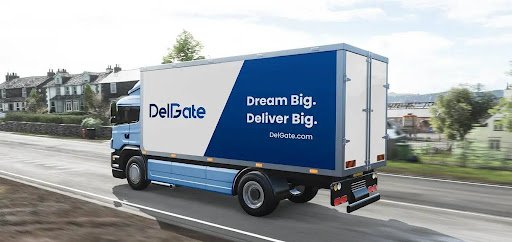Blog
How Canadian Trucking Rates Vary by Region in 2025

Trucking is the backbone of Canada’s supply chain, but costs vary greatly depending on location. When businesses compare trucking rates per km Canada, they quickly notice differences between provinces, fuel costs, and road conditions. Understanding these regional variations helps companies budget more effectively and choose the best logistics partner.
Why Canadian Trucking Rates Differ Across Provinces
Distance is a key factor, but not the only one. Regional fuel taxes, tolls, and labor costs influence Canadian trucking rates. Urban areas often have higher rates due to congestion, while rural and northern regions add costs because of long distances and limited infrastructure.
Western Canada: Long Distances and Energy Influence
British Columbia and Alberta face unique trucking challenges. Steep terrain in B.C. increases fuel consumption and vehicle wear. Alberta’s energy sector drives heavy freight demand, often raising Canadian trucking rates compared to other provinces. The long distances between major cities also add significant per-kilometer expenses.
Central Canada: Ontario and Quebec Pricing
Ontario and Quebec, Canada’s busiest freight hubs, benefit from dense road networks. However, high population density leads to traffic delays, which impact efficiency. Despite this, competition among carriers keeps Canadian trucking rates more stable than in western or northern provinces.
Atlantic Canada: Smaller Markets, Higher Costs
New Brunswick, Nova Scotia, Prince Edward Island, and Newfoundland face higher rates due to smaller freight volumes. Limited backhaul opportunities make it costly for carriers to return without loads. Businesses here often pay premium Canadian trucking rates compared to central Canada.
Northern Canada: Remote and Expensive Routes
Trucking in the Yukon, Northwest Territories, and Nunavut is costly. Seasonal ice roads, limited infrastructure, and vast distances drive up Canadian trucking rates. Transporting essential goods to these regions requires specialized equipment and experienced carriers.
The Role of Fuel in Canadian Trucking Rates
Fuel is the largest variable expense in freight. Provinces with higher taxes on diesel increase costs per shipment. Since rates are often calculated per kilometer, fuel price fluctuations directly affect Canadian trucking rates across regions.
Cross-Border Freight and Regional Differences
Carriers operating between Canada and the U.S. face customs fees, border delays, and currency exchange costs. These add-ons make cross-border shipments more expensive than domestic ones, raising Canadian trucking rates especially in Ontario and Quebec, where cross-border freight is most common.
Seasonal Impacts on Canadian Trucking Rates
Winter storms in the Prairies or flooding in Atlantic Canada can disrupt schedules. Seasonal demand, like agriculture harvests, also creates temporary rate spikes. Businesses planning ahead reduce exposure to sudden changes in Canadian trucking rates.
Choosing the Right Logistics Partner
Businesses benefit by working with experienced third-party logistics providers. DelGate, recognized as one of the best Canada 3PL companies, offers nationwide trucking solutions with optimized routing, transparent pricing, and strong carrier networks to help companies manage fluctuating Canadian trucking rates.
Technology’s Role in Shaping Rates
Digital freight platforms, route optimization software, and fuel-efficient trucks are changing the industry. Companies that invest in technology reduce costs and pass savings along. As a result, technology-driven carriers often offer more competitive Canadian trucking rates.
Freight Volume and Market Demand
High demand seasons, like holidays, push rates up, while slower months bring them down. Trucking companies balance supply and demand, and businesses that schedule shipments during off-peak times often pay lower Canadian trucking rates.
The Impact of Sustainability Regulations
Environmental policies are shaping the industry. As provinces push for lower emissions, carriers adopt cleaner trucks. While this reduces fuel costs long-term, short-term investments raise Canadian trucking rates until fleets modernize.
Tips for Businesses Managing Canadian Trucking Rates
- Compare rates across provinces.
- Ship during off-peak periods.
- Partner with a trusted 3PL like DelGate.
- Use route optimization tools.
- Monitor fuel surcharges regularly.
Future Outlook for 2025 and Beyond
Experts expect steady growth in freight demand due to e-commerce and global trade. While technology may stabilize costs, regional differences will persist. Companies that understand how Canadian trucking rates vary by region will stay competitive.
FAQs About Canadian Trucking Rates
1. What are the average trucking rates per km in Canada in 2025?
The average trucking rates per km Canada range from $2.50 to $4.50 depending on province, load type, and fuel costs. Long hauls across rural or northern routes typically fall at the higher end.
2. Why do Canadian trucking rates differ between provinces?
Rates vary due to fuel taxes, road conditions, labor costs, and freight demand. For example, northern and Atlantic provinces often face higher Canadian trucking rates due to limited infrastructure and fewer backhaul opportunities.
3. How can businesses reduce Canadian trucking rates?
Companies can cut costs by consolidating shipments, planning off-peak deliveries, and working with reliable 3PLs like DelGate. Using technology for route optimization also helps reduce Canadian trucking rates.
4. Are Canadian trucking rates higher for cross-border shipments?
Yes, shipments between Canada and the U.S. often cost more due to customs fees, border delays, and exchange rates. Ontario and Quebec carriers see the greatest impact on Canadian trucking rates for cross-border loads.
5. Will Canadian trucking rates increase in the future?
Analysts expect moderate increases in 2025 as fuel prices, labor shortages, and sustainability investments continue to impact costs. Businesses can offset these increases by partnering with efficient 3PLs like DelGate.
-

 Celebrity1 year ago
Celebrity1 year agoWho Is Jennifer Rauchet?: All You Need To Know About Pete Hegseth’s Wife
-

 Celebrity1 year ago
Celebrity1 year agoWho Is Mindy Jennings?: All You Need To Know About Ken Jennings Wife
-

 Celebrity1 year ago
Celebrity1 year agoWho Is Enrica Cenzatti?: The Untold Story of Andrea Bocelli’s Ex-Wife
-

 Celebrity1 year ago
Celebrity1 year agoWho Is Klarissa Munz: The Untold Story of Freddie Highmore’s Wife
















